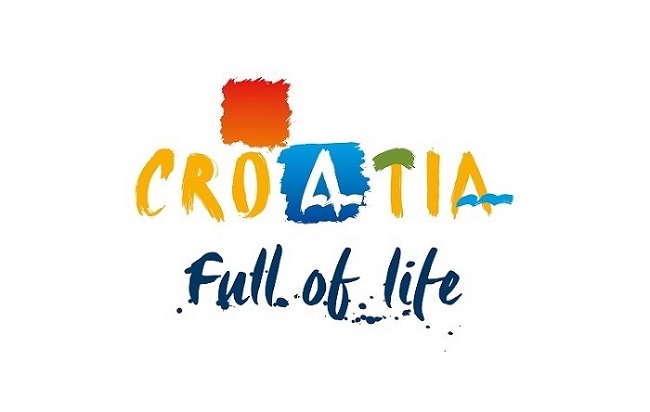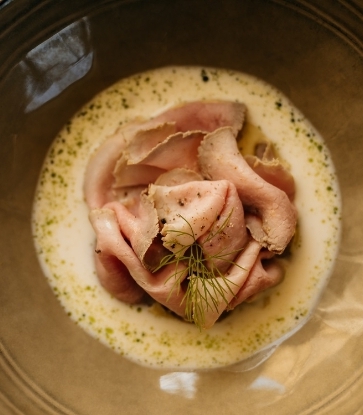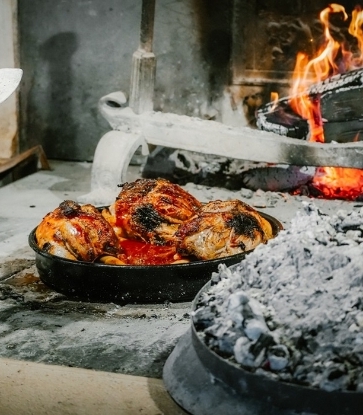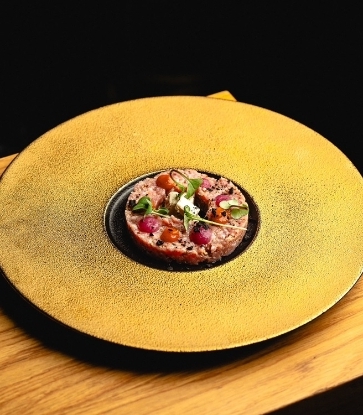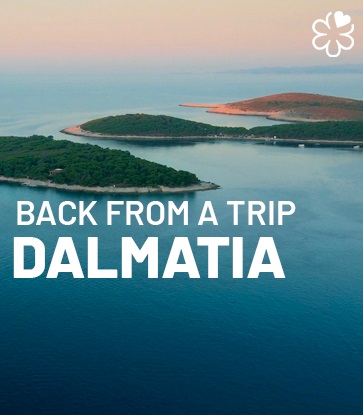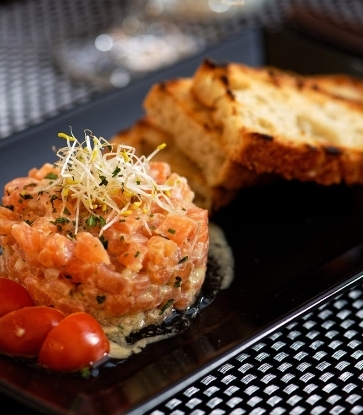The magic of Croatia is seemingly endless, whether you’re on a beach holiday enjoying its crystal-clear water or a vacation immersed in nature. However, this colourful country teeming with life has other major attractions, namely its art, culture and stunning architectural heritage.
This is highlighted in its capital Zagreb, the pulsating heart of Croatia, a lively city with interesting attractions to fill your day. Most of its monuments are located in the heart of the capital and can be easily visited on foot.
Exploration of the city usually begins from the very central Trg bana Josipa Jelačića, a square commanded by the equestrian statue of powerful governor Josip Jelačić on its south side. The east side of the square, meanwhile, is dominated by Zagreb’s most famous fountain, Manduševac. Offering welcome respite on the hottest days of summer and frequented by high school students when celebrating their graduation and transition to adulthood, the fountain is home to legends galore. According to one of its most famous stories, the Manduševac fountain is said to have infused Zagreb with its soul and to have given the city its name. And like all legends, this particular story starts with the refrain “Once upon a time…”.
The Cathedral of the Assumption of the Blessed Virgin Mary is the largest religious building in Croatia and the most elegant neo-Gothic construction south-east of the Alps. Its ground plan, boasting fine arches and crossed ribs inside three polygonal apses with narrow windows, is reminiscent of the French architectural style; the nave (the highest sections of which rising to a height of 80m were added at a later date) follows the construction models of modern German architecture, while the fanciful sculptural works on display reflect the influence of various Czech schools. In front of the cathedral stands the city’s splendid Dolac Market – a spectacular sight with its red and white umbrellas filling the square, silhouetted against the backdrop of the cathedral, and the voices of its stallholders mixed with the aromas of its wares on display.
The market, which is also home to a basement section as well as a covered space dedicated to the freshest fish, is an absolute must for all food-lovers. Here, you’ll find fruit, cheeses, fish, meat, sweet treats, home-made preserves, honey, spirits and magnificent bouquets of flowers which locals love to offer as a gift to friends when invited to lunch or dinner. Fresh, local and affordably priced produce is the undoubted star of the show at Dolac Market, the city’s main place of trade since the 1930s. It is at its busiest in the morning and is open from 7am to 3pm Monday to Saturday and from 7am to 1pm on Sunday.
Afterwards, head to the Špica, a fascinating pedestrianised area between the Ban Jelačić and Petar Preradović squares (the latter is also known as “flower square”) famous for the long line of Zagreb’s cafés, where you can sit and chat in perfect peace and quiet. An aperitif is a must here, with a wide choice of options available as you enjoy quality time with friends.
From an architectural perspective, Zagreb is also one of the world’s most beautiful cities. An example of this is the church of St Blaise, the most significant modern religious building in Croatia. Built between 1912 and 1915 according to a design by Viktor Kovačić, its plan follows that of a Greek cross, with significant volumetric gradation and crowned by a dominant reinforced concrete dome. It combines Byzantine influences, traditional Croatian architectural styles and modern construction techniques to monumental effect.
Architectural enthusiasts should also mark the Croatian State Archives on their map, a project designed by architect Rudolf Lubynski in 1913. If you look closely, you can see four owls supporting a globe on each corner of the dome, as well as various allegories relating to the building’s purpose. Every detail, from the decorative features on the façade to the furnishings, has been meticulously designed.
The famous Viennese architects Ferdinand Fellner and Herman Helmer are behind the splendid Croatian National Theatre. Officially opened in 1895 and built in neo-Baroque style, it is home to the country’s ballet, opera and theatre companies.
It is also worth discovering the “Zagreb Solar System”, a series of sculptures representing the sun and the 9 planets (including Pluto) that you will come across as you stroll across the city: The Grounded Sun by Ivan Kožarić is a sculpture that began a tradition that was carried forward by an installation by Davor Preis. What is particularly interesting is that the positioning of the planets is a true reflection of their location in the galaxy, albeit “on the ground” and on a greatly reduced scale.
The Hazu Palace is also a building of rare beauty and is home to the Croatian Academy of Art and Science, the highest institution for art and science in the country. It occupies a Neo-Renaissance palace designed in 1880 by Friedrich Schmidt and is the only palace (in the true sense of the word) in Zagreb.
We then recommend that you take the world’s shortest funicular used for public transport that has connected the city’s upper and lower towns since 1890.
Lovers of green spaces will delight in a short stop to relax in the Maksimir park, which opened in 1794. Designed in English style, and home to several lakes, pavilions and the Zagreb zoo, it is one of the most beautiful anywhere in the country.
Visitors will also be fascinated by the oldest pharmacy in Zagreb, perched at the top of Kamenita Street, where Niccolò Alighieri, the great grandson of Dante Alighieri, author of the Divine Comedy, once worked.
Zagreb is also famous for its picturesque courtyards, particularly those in the upper town, and for the 214 romantic gas lamps that have illuminated its streets for over 150 years.
In recent times, street art has flourished in the city thanks to the work of numerous talented artists – as a result, Zagreb is now teeming with colourful murals.
The Croatian capital is also an important city for art with museums displaying works of every style and from every era, over 30 active theaters and festivals featuring exhibitions that showcase the country’s fascinating culture. In addition to the Croatian National Theatre, Zagreb is also home to its Archaeological Museum, whose exhibits include the mysterious mummy of a woman from Thebes in Egypt, wrapped in a shroud, and the Strossmayer Gallery of Old Masters, housing an important collection of works by famous artists, which is a must for lovers of European art from the 15th to 19th centuries.
On the subject of art, one of the season’s most exciting events is the Zagreb Festival of Lights which in 2024 has been held from 20-24 March. The event heralds the arrival of spring and the start of the tourist season. This exciting initiative illuminates the entire city with its light shows, delighting locals and visitors alike with its magical evenings full of beauty and dazzling fun.
During the Festival of Lights, artists bring life to the city’s historic buildings, using their walls as a huge canvas for their visionary works thanks to the use of modern technology. Zagreb’s streets are also lit up with 3D LED installations and beams of light, while the city’s sky is illuminated with the iridescent colours of the rainbow. The festival takes place throughout the centre of the city, in so doing providing an opportunity to take a truly extraordinary tour through the heart of Zagreb. Lighting effects will follow you as you discover the city, providing a source of fascination thanks their seemingly endless whirlwind of tunnels, holographic images and sound effects, creating an unforgettable experience for young and old alike.
Thanks to its success, the festival grows year on year, extending across new locations in the city, with joyous entertainment and excitement guaranteed, and you don’t need a ticket – just turn up in the city and be ready to have fun as you stroll through its streets! The Festival of Lights is also the best way to welcome spring and to bid farewell to the cold days of winter.
For lunch or dinner, MICHELIN’s inspectors recommend the Bib Gourmand Beštija, a restaurant in the heart of the city that offers superb value for money. The ingredients it uses are sourced from the neighbouring (and previously mentioned) Dolac Market so they couldn’t be more local!
“I have always been a fan of enogastronomy, and I, for one, love to eat and choose top-quality ingredients”, the owner of Beštija, Mario Marković explains. “For me, food is not just fuel to survive, but a way of life. I have worked in the hospitality sector for over 15 years, ranging from cruise ships to various Michelin-starred restaurants. I finally made the decision to return home to start my own business. I am immensely proud of my team and the results we are achieving, starting with our Bib Gourmand recognition”.
“Since my childhood, my best experiences in life have been around a dining table”, Marković continues. “Food, its taste and flavours were always the common thread when it came to enjoying special moments with friends and a sense of sharing. Even today, these childhood memories are important aspects of our dishes. What has changed is not so much the taste and flavours, which remain as intense as ever, but the presentation, which has become more elegant. In addition, we also use haute cuisine cooking techniques to retain the sensory characteristics of our ingredients. Our philosophy at Beštija is to use only fresh, local and seasonal ingredients and to serve them in a way that highlights their original taste. Our philosophy is one based on zero food waste, sustainability and respect for the authenticity of the ingredients we use. I have entrusted the running of our kitchen to Mateo Davidović, whom I trust implicitly, and who has been with us now for almost four years. He is young, incredibly creative and has a visionary approach. Every day he plays with fresh ingredients and creates dishes that keep guests coming back to try new things. I believe that we have built a solid foundation upon which we can experiment with new ideas”.
“Seasonal ingredients are and remain the cornerstone of our cuisine”, the owner continues. “And it is these ingredients that dictate the taste, colours and flavours of our dishes. We reinterpret them with creativity, but without distorting them. Croatia is a cradle for extraordinary culinary excellence and we are fortunate to live in a land of such abundance. We are also fortunate to be located close to Dolac Market, from where we source our supplies every day. We have built up long-term relationships with our suppliers, many of whom we consider our friends. The Dolac Market is the “belly” of Zagreb, as well as the “belly of Beštija”. As you will have understood, I love my country deeply, and traditional Croatian cuisine provides a continual source of inspiration: for us, roots are fundamental and we do not want to lose them”.
“One of my most valued suppliers is Ribarski obrt Marjan Vlatković, from the island of Kali, from whom we buy our fish, while we purchase our meat for Beštija from another trusted supplier, the Žumberčanka butchers. They do an excellent job, and our tartare is one of the restaurant’s most loved and most popular dishes. We serve it with seasonal side dishes – in autumn, for example, with shallots, confit eggs and toasted focaccia”.
As we have already mentioned, dishes served at the restaurant change frequently, but here are a few examples of what you will find on the menu. In autumn, starters include semifreddo of foie gras with black fig chutney, served with toasted focaccia or, for those who prefer the flavours of the sea, scallops with Jerusalem artichoke purée, Jerusalem artichoke chips, blackberry, hazelnuts and cranberry. Vegan appetisers include roasted yellow and purple beetroot with parsnip cream and walnuts. One of the most popular dishes on the autumn menu is the duck with smoked apple and celery purée, cranberry jus and chicory stewed in orange juice, and the piper gurnard fillet with a mussel velouté, cauliflower and butter cream. Lighter-flavoured options that you’ll also want to try to include the cauliflower steak with a miso and cauliflower cream, onion ketchup and vegetable jus, while the Quattro Formaggi agnolotti with pumpkin cream, chestnut purée and pumpkin seeds is the perfect comfort food for the winter months.
During the summer, however, you can enjoy appetisers such as sardine confit with tapenade, served with wholemeal bread, fermented courgettes and radish, and a mouthwatering soup with charred leeks and potato confit, a zero-waste vegetarian dish.
One of Beštija’s latest main dishes is fillet of amberjack, a white fish high in Omega 3 fatty acids and with a firm yet succulent texture, which is also sometimes known as “white tuna”. It is served with a ragù of baby peas, broad beans, white asparagus and yellow carrots sautéed in butter, accompanied by a fish sauce and flavoured with lemongrass, lime and root vegetables.
In spring, don’t miss the light risotto with octopus and fennel seasoned with red seaweed powder, which adds a special maritime touch to the dish. Naturally, pasta also features on the spring menu, with dishes such as tagliatelle with a spring onion pesto, beetroot foam and a black polenta crust.
The restaurant’s most successful dishes include pork pancetta with red chard and young garlic, grilled carrots, apple ketchup and pork jus, with its strong and balanced flavours.
At Beštija, the desserts are also a delight, and for those with a sweet tooth we recommend the chocolate mousse with hazelnuts, a tangerine butter sauce and kumquat, as well as the vanilla bourbon crème brûlée with Baileys and biscotti.
“Our aim is to continue to offer excellent value for money, with our chefs adding creative touches to local and seasonal ingredients so that our dishes are as appealing as ever, even when it comes to simple vegetables”, concludes owner Mario Marković.
Nowadays, Zagreb is an unmissable capital for travellers keen on art, culture and superb food, and a lively metropolis that will infuse you with its positive energy, enabling you to return home happy, refreshed, full of new ideas… and a desire to return to the city as soon as possible!
Hero image: Beštija -Rio
